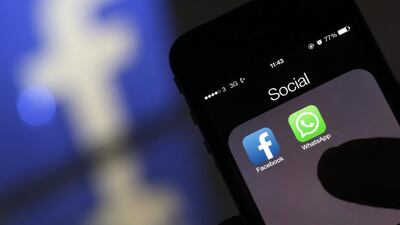There are reports that Google, Facebook and Twitter are working overtime to stamp out the scourge of fake news. Unfortunately, these reports may turn out to be as flawed as the content they are supposedly trying to banish.
This is not to cast doubt on the sincerity of the tech giants’ intentions. But can they realistically do a great deal about something that’s so much in demand?
They say they're going to try. After testifying to the US Congress about the Russian-financed ads and fake news on the social networking site, Facebook's chief operating officer Sheryl Sandberg vowed: "We'll do everything we can to defeat them." Jack Dorsey, CEO of Twitter, which is also accused of allowing hoaxes of all sorts on its platform, has promised a "more aggressive stance (towards) hate symbols, violent groups…" Six months ago, Google began to combat the circulation of "fake news" on its search engine by a tool that allowed users to report misleading content. And yet, after the October 1 Las Vegas mass murder, Google and Facebook were awash in false stories about the political motives and identity of the shooter.
The aftermath of Las Vegas lays bare the contours of the problem. Fake news flourishes because there is an appetite for it. Rumours – online or offline – flourish because, as tennis star Venus Williams once said, they’re probably more exciting than the truth.
_________________
Read more from Rashmee Roshan Lall
Why do secessionist movements rarely gather international support?
Will a peace-for-justice trade-off be viable in Afghanistan?
Big tech has a big problem, which means we all do
_________________
Tall stories have long been a staple of the human diet. Consider the long list of urban legends. There is the 999 phone charging myth, which suggests a mobile phone can be charged by the simple expedient of calling the emergency services then hanging up. Creepypastas are paranormal stories about murder, suicide, and other unpleasant occurrences. The spider bite story, which spread through parts of Europe less than 50 years ago, said tiny spiders spill from a bite on the cheek. The vanishing hitchhiker – someone who literally disappears, often from a moving vehicle – is a popular story in many parts of the world. On the British isles, there is a persistent belief in a nocturnal apparition, the black dog, which is said to have glowing eyes. In India, public hysteria fed rumours about a "monkey man", with vigilante groups patrolling the streets of Delhi in May 2001. In 1995, statues of the Hindu deity Ganesh were said to be miraculously drinking milk offerings.
In the US, home of the tech companies now being called upon to end the cycle of fake news, there are legends that were surely the fake news of their day. Frontiersman Davy Crockett was said to have killed a bear when he was aged three. Pioneering nurseryman Johnny Appleseed supposedly slept in the snow, leaving his warm hollowed-out log to a mother bear and her two cubs. Tall stories about historical American figures such as Daniel Boone and Calamity Jane are cherished in their telling and re-telling. In the last century, they took the form of pop songs, comic strips, films and television shows. Also in the last century, before Photoshop, there was the tall-tale postcard.
_________________
Read more from Opinion
'Laggards' must not delay GCC implementation of VAT
How the UAE builds a better future through public diplomacy
Could western democracies learn from the Chinese political model?
_________________
In many ways, fake news stories are the fairy tales of our time. There is a constituency in every culture for shockers, which becomes the can-you-believe-it faux news of the day. Pope Francis's endorsement of Donald Trump's presidential run was one such. So too the claim Hillary Clinton's campaign chairman, John Podesta, was a witch. There is also the fanciful notion that US coal mining can be returned to its glory days of high demand. And finally, there is the view that fake news itself can be stopped by requiring the tech platforms to re-jig algorithms, hire human curators, aggressively police content and penalise purveyors of lies and flim-flam.
Would it not be more worthwhile to treat the fake news phenomenon like the war on drugs? To attack demand, not supply, as Portugal has done, and the US should have? In 2001, Portugal decriminalised the use of all drugs and began a massive public health campaign to tackle addiction. This year, its health ministry says only 25,000 people are addicted to heroin, just a quarter of the number when the programme began. But the US has continued its war on drugs and last year, more Americans died of overdoses than were killed in its last three wars – Vietnam, Afghanistan and Iraq.
If in doubt, consult Twitter. Someone recently tweeted: “Fake news isn't a supply problem, it's a demand problem. People like information that confirms their biases, even if it's not true.”
Teaching people to differentiate fact from fiction and to repose trust in institutional wisdom and pronouncements is a job for schoolrooms, not just tech platforms.


